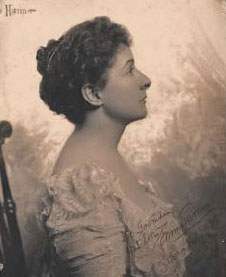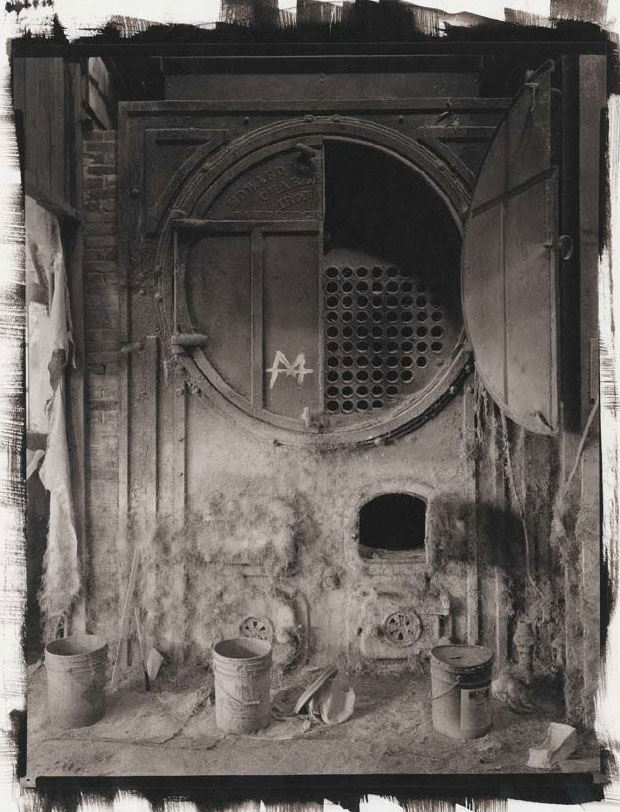- Relief printing
- Intaglio and planographic printing
- Color printing
- Bits and pieces
- Early photography in silver
- Non-silver processes
- Modern photography
- Color notes
- Color photography
- Photography in ink: relief and intaglio printing
- Photography in ink: planographic printing
- Digital processes
- Where do we go from here?
Platinum

Platinum print. Ernest W. Histed. Emma James. 1900. 9 1/2 x 7 11/16" (24.2 x 19.5 cm). The Museum of Modern Art, New York. Gift of Richard Benson. A professional studio portrait, printed in platinum and probably toned with mercury to alter the neutral platinum color.
The blueprint might have made more pictures but the visual king of the iron processes was the platinum print. This method, invented in 1877 by William Willis, used the iron compound ferric oxalate as a sensitive material that, after exposure, could reduce a platinum salt to a visible metallic deposit. The paper was very sensitive to moisture but after manufacture could be sealed in metal containers and sold, so that photographers could make these prints without having to do complex chemical shenanigans. The irony is that the process is very easy to do from scratch without buying anything except the raw chemicals and the paper onto which they will be coated. It is worth explaining, because the practice of hand-coating a sheet for photographic printing purposes is simple and greatly enjoyable as a craft.

Platinum print. Richard Benson. Fall River Boiler. 1978. 16 7/16 x 13 1/16" (41.7 x 33.1 cm). The Museum of Modern Art, New York. Gift of Richard Benson © Richard Benson. This print is untrimmed, showing the brushmarks made when the sensitive iron/platinum coating was applied to the sheet of Crane’s stationery that was the basis for the print.
A coating made this way is not an emulsion—not a suspension of some material in another, like the silver salts dispersed in the gelatin coatings of film. To make a platinum print the raw chemicals are just dissolved in water, stored in bulk in separate bottles, and then mixed in careful proportions just before coating. The measuring is done with eyedroppers—so many drops of sensitizer (the iron compound), so many of metal (the platinum salt), and so many of other chemicals that control contrast. The drops are swirled together (perhaps in a ramekin stolen from the kitchen) and then poured right onto the center of the paper. The liquid is evenly spread with a broad, high-quality watercolor brush, then dried with a hair dryer (perhaps stolen from the family bathroom).
In the print shown on the previous page we can see the marks of the watercolor brush extending past the image area. After the sheet is dry it is exposed to the negative, by contact, using either sunlight or some short-wavelength lamp. Once exposed (for five minutes or so in good sunlight), the print is placed face up in a tray and a developer is poured on top of it. The image appears instantly. Modern gelatin-silver papers develop slowly, as the gelatin emulsion controls the action of the developing chemicals. The platinum print uses no emulsion so the chemical reaction of development is nearly instantaneous. After a minute or so the print is cleared in a weak acid (which removes the iron compounds and unused platinum), rinsed for a while in running water, then dried on a screen. The wet print is always more beautiful than when it dries. It takes a strong mind to put the memory of the wet print away and to accept the one that has dried by a few hours later. Some photographers in the past varnished or waxed their prints to try to retain this enticing wet look, but these treatments almost always yellowed over time and caused more damage than good.

